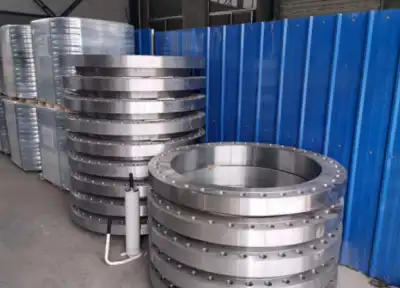As we all know, pipelines are usually connected by some kind of pipe fittings, which we call "flange". However, in real life, many of us know nothing about flanges and blind flanges and often confuse them. Here is a special distinction between flanges and flange blind plates for you, and the explanation is as follows:

1. Different characteristics of the two
A Blind flange is a flange without a hole in the middle. It is mainly used at the front end of the pipeline seal to seal the port. Its function is the same as the valve head and pipe cover, but the blind plate seal is a removable sealing device, and the seal of the head cannot be opened again. Blind flange materials include carbon steel, alloy, stainless steel, plastic, etc. Due to its good sealing performance, blind flange plays the role of isolation, cutting, sealing head, pipe cover, etc. When completely separated, it is usually used as a constant isolation means. A Blind plate is a solid plate with a handle. Generally, it is more convenient to use a flange blind plate for isolation systems used under general conditions. For normal operation, a yellow throttling ring can also be used to fill the installation gap of the blind plate on the pipeline.
A Flange (also called flange or raised edge) is a component for connecting pipes, usually with a hole at the end of the pipe. When connecting, the flange needs to be tightened with bolts. The flange is sealed with a gasket or plays a temporary role in testing. Flanges are common valve disc parts in pipeline engineering. Generally speaking, flanges are divided into threaded flanges, welded flanges, and clamping flanges according to different connection methods. Low-pressure pipelines can be threaded flanges and welded flanges, and the pressure can exceed 4 kg.
2. The applications of the two are different:
1. Flanges have been widely used in basic projects such as the chemical industry, construction, petroleum, sanitation, pipelines, fire protection, etc. due to their good performance characteristics.
2. In the pipeline strength test or sealing test, the blind plate in the original startup preparation stage cannot be used at the same time as the connecting equipment. The blind plate should be installed at the connection between the equipment and the pipeline. Various process material pipes are connected to the boundary area outside the boundary area. When the equipment stops running, a blind plate should be installed at the cut-off valve.
Well, the above content is about the difference between flange and blind flange. I hope you have some understanding. After all, only by understanding can we choose the right connecting pipe fittings to make the pipeline connection tighter. Pay attention to us and bring you more knowledge about flanges, elbows, etc.!
Kaibin Pipe Fittings can realize comprehensive production from forging, heat treatment, machining, physical and chemical inspection, and surface treatment to packaging and delivery. It can produce high and medium-pressure butt elbows, stainless steel pipe fittings, alloy steel pipe fittings, flanges, tees, reducers, large elbows, sockets, and other series of pipeline parts.











